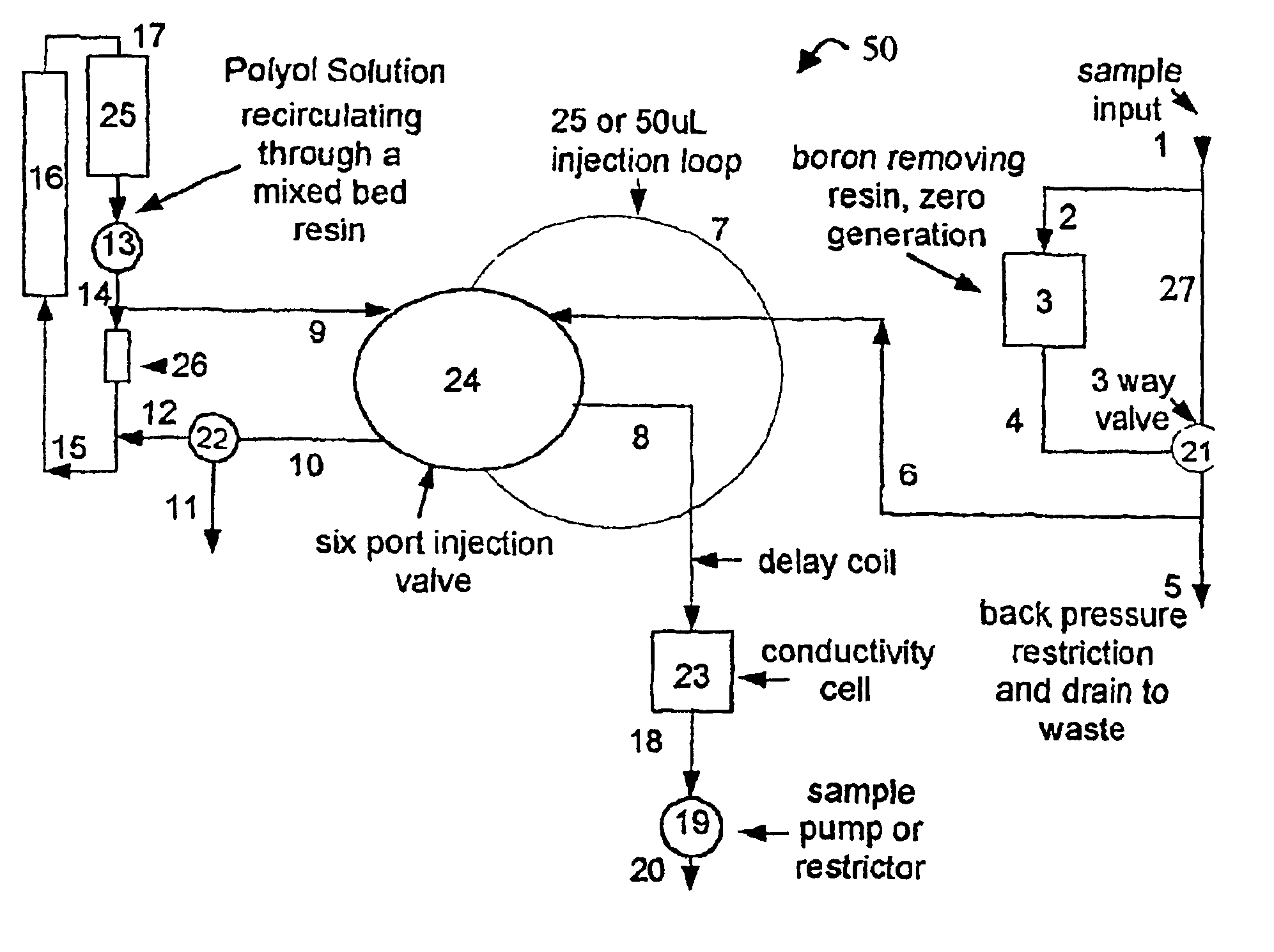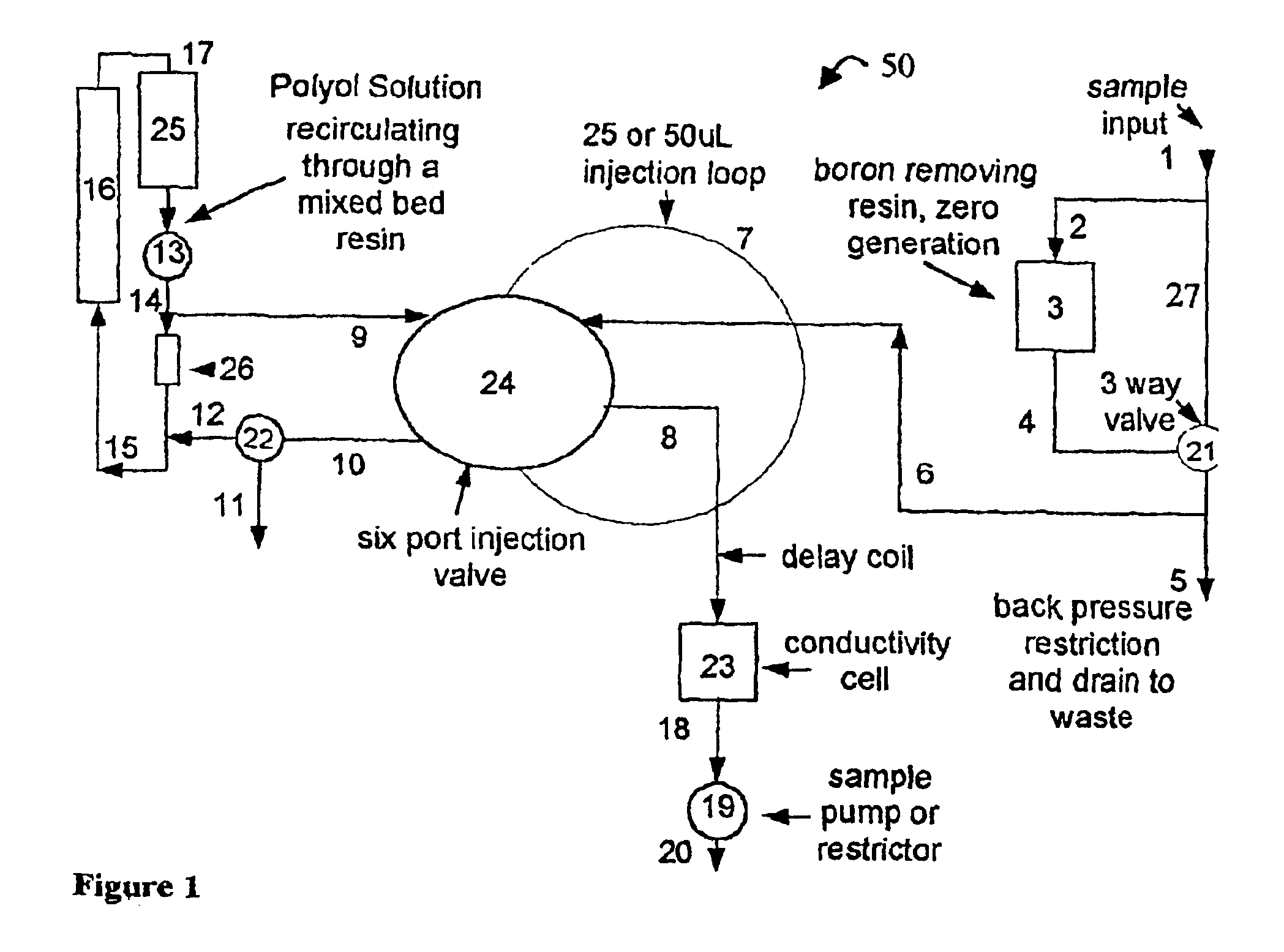Low-level boron detection and measurement
a boron detection and low-level technology, applied in chemical/physical processes, water/sewage treatment by ion exchange, separation with moving sorbents, etc., can solve the problem of high error rate, insufficient resin before use, and introduction of error in the final boron measuremen
- Summary
- Abstract
- Description
- Claims
- Application Information
AI Technical Summary
Benefits of technology
Problems solved by technology
Method used
Image
Examples
Embodiment Construction
[0069]The present invention is directed to methods and apparatus for accurately measuring very low levels of boron in ultrapure water and having particular utility in manufacture of semiconductors. The present invention also overcomes limitations of prior art processes and devices thereby making possible rapid, inexpensive measurement of boron in ultrapure water at concentrations ranging from about 0.01 to 1000 ppb as boron with equipment which is relatively compact and inexpensive, and which can be run on-line by relatively unskilled operators.
[0070]Large amounts of ultrapure water are required in processes to manufacture semiconductors. Boron is a contaminate that must generally be removed to very low concentrations. As previously discussed, boron is a silicon semiconductor p-type dopant used in manufacture of silicon solid state electronics and functions as a principal charge carrier. Therefore, boron must not be added inadvertently during the manufacturing process. S. Malhotra e...
PUM
| Property | Measurement | Unit |
|---|---|---|
| Fraction | aaaaa | aaaaa |
| Fraction | aaaaa | aaaaa |
| Molar density | aaaaa | aaaaa |
Abstract
Description
Claims
Application Information
 Login to View More
Login to View More - R&D
- Intellectual Property
- Life Sciences
- Materials
- Tech Scout
- Unparalleled Data Quality
- Higher Quality Content
- 60% Fewer Hallucinations
Browse by: Latest US Patents, China's latest patents, Technical Efficacy Thesaurus, Application Domain, Technology Topic, Popular Technical Reports.
© 2025 PatSnap. All rights reserved.Legal|Privacy policy|Modern Slavery Act Transparency Statement|Sitemap|About US| Contact US: help@patsnap.com



